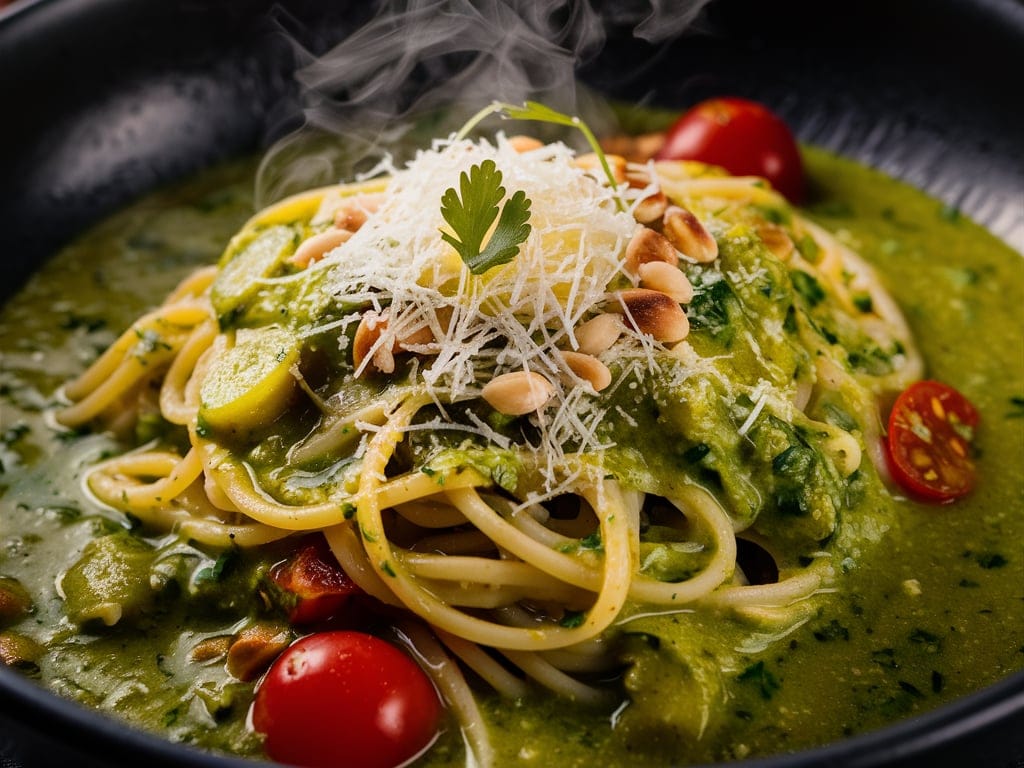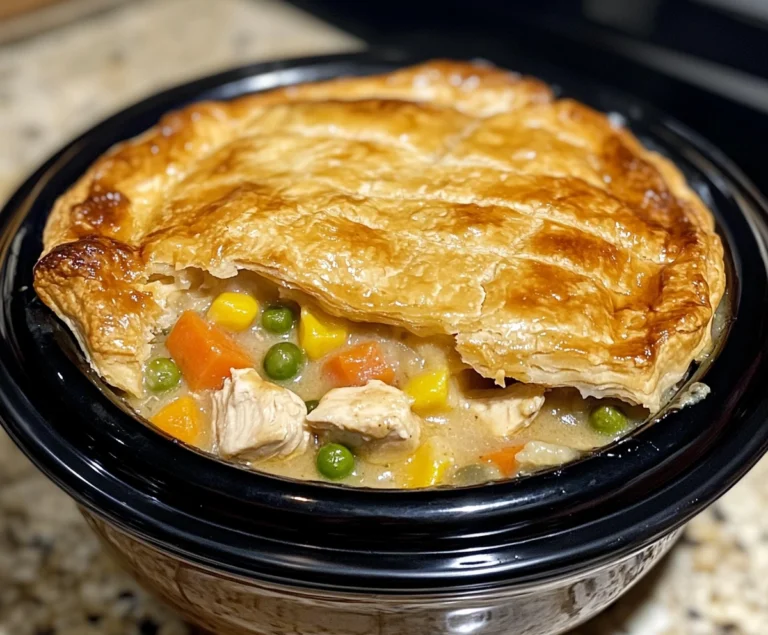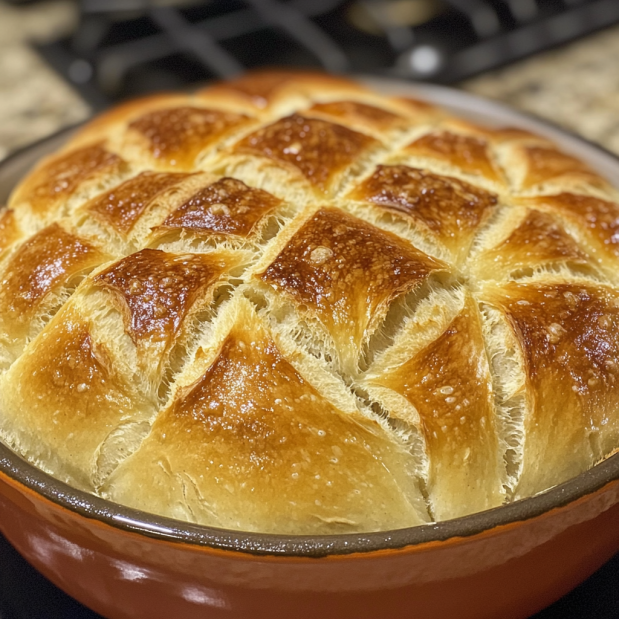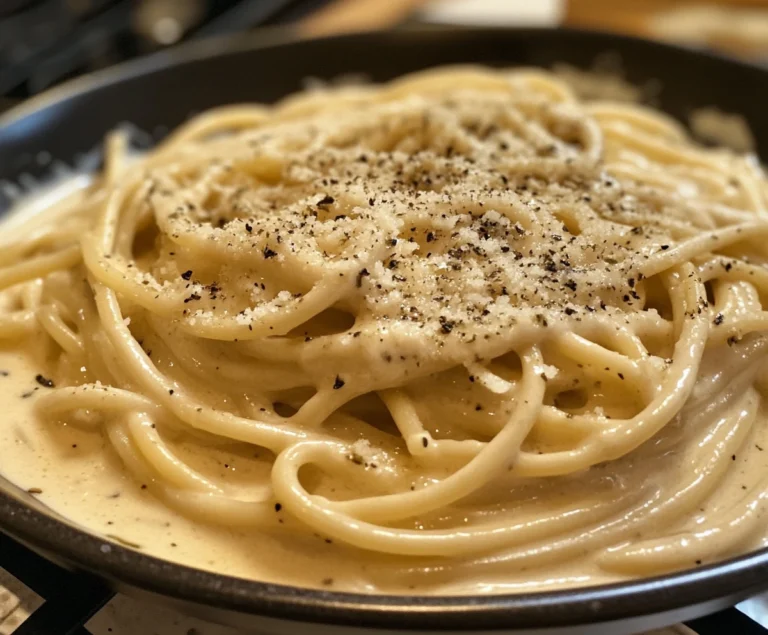Tomatillo Pasta Recipe: A Flavorful Mexican-Italian Fusion
Introduction
In the world of culinary fusion, few dishes embody the perfect marriage of cultural flavors like this Tomatillo Pasta Recipe. A delightful combination of Mexican and Italian cuisines, this recipe brings together the zesty, tangy notes of tomatillos with the comforting familiarity of pasta. For those looking to expand their cooking repertoire, this dish offers an excellent opportunity to explore the unique flavor profiles of tomatillos while still enjoying the satisfying experience of a hearty pasta meal.
Tomatillos, often referred to as “Mexican husk tomatoes,” are a staple in many traditional Mexican dishes, particularly in salsas and sauces. Their tart, slightly citrusy flavor makes them a versatile ingredient that can brighten up a variety of dishes. When paired with pasta, tomatillos add a refreshing twist that is both unexpected and delightful.
In this comprehensive guide, we’ll walk you through every step of preparing this dish, from selecting the freshest tomatillos to perfecting the sauce and pairing it with the right type of pasta. Along the way, we’ll explore variations of the recipe, delve into the health benefits of tomatillos, and provide tips for avoiding common cooking mistakes. By the end of this article, you’ll not only have a delicious meal on your table but also a deeper understanding of how to creatively incorporate tomatillos into your cooking.
Ingredients of Tomatillo Pasta Recipe
Before we get started, let’s take a look at the ingredients you’ll need to make this Tomatillo Pasta Recipe:
- 1 lb of pasta (penne, fusilli, or spaghetti)
- 1 lb of fresh tomatillos
- 2 cloves of garlic
- 1 onion, chopped
- 1 jalapeño pepper, deseeded and chopped
- 1/2 cup of cilantro, chopped
- 1/2 cup of chicken or vegetable broth
- 1 avocado (optional)
- 1 lime, juiced
- Salt and pepper to taste
- Olive oil for cooking
- Optional: 1/2 cup of heavy cream for a creamier sauce
Each ingredient plays a crucial role in building the layers of flavor in this dish. The tomatillos provide a tangy base, while the garlic and onion add depth and aroma. The jalapeño introduces a mild heat, balanced by the freshness of cilantro and the richness of avocado. The lime juice enhances the tanginess of the tomatillos, and the broth helps to achieve the desired consistency of the sauce.
For those with dietary preferences or restrictions, this recipe is easily adaptable. You can use gluten-free pasta or opt for a plant-based alternative to the heavy cream for a vegan version. These substitutions ensure that everyone can enjoy this dish without compromising on flavor or texture.
Preparing the Tomatillo Pasta Recipe
The first step in making this Tomatillo Pasta Recipe is to prepare the tomatillos properly. Here’s how to do it:
Selecting Fresh Tomatillos
The key to a great tomatillo sauce starts with selecting the freshest tomatillos. When shopping, look for tomatillos that are firm and bright green, with husks that are intact and tightly wrapped around the fruit. The husks should be slightly sticky to the touch, indicating that the tomatillo inside is fresh. Avoid tomatillos that are soft, have blemishes, or whose husks are yellowing, as these may be overripe or spoiled.
Peeling and Washing
Once you’ve selected your tomatillos, it’s time to peel and wash them. Remove the husks by gently pulling them away from the fruit. The husks can be a bit sticky, so you may need to rinse the tomatillos under warm water as you remove them. After husking, give the tomatillos a thorough wash to remove any remaining stickiness or dirt.
Roasting vs. Boiling
One of the decisions you’ll need to make when preparing your tomatillos is whether to roast or boil them. Each method imparts a different flavor profile to the sauce:
- Roasting: Roasting tomatillos brings out their natural sweetness and adds a slight smokiness to the sauce. To roast, preheat your oven to 400°F (200°C). Place the tomatillos on a baking sheet and roast them for about 20 minutes, or until they’re soft and their skins are slightly charred. Roasting is the preferred method if you want a sauce with a deeper, more complex flavor.
- Boiling: Boiling tomatillos is a quicker method that results in a brighter, tangier sauce. To boil, simply place the tomatillos in a pot of water and bring it to a boil. Cook the tomatillos for about 5-7 minutes, or until they’re soft and their color changes to a duller green. Boiling is ideal if you prefer a sauce that highlights the natural tartness of the tomatillos.
Whether you choose to roast or boil your tomatillos, the result will be a flavorful base for your pasta sauce. The choice of method depends largely on your personal taste preferences.
Making the Tomatillo Sauce
With your tomatillos prepared, it’s time to move on to making the sauce. The tomatillo sauce is the star of this dish, and getting it just right is essential. Follow these steps to create a sauce that is both rich and tangy:
Sautéing the Vegetables
Start by heating a tablespoon of olive oil in a large pan over medium heat. Add the chopped onion, garlic, and jalapeño pepper. Sauté the vegetables until they’re soft and fragrant, which should take about 5-7 minutes. The onions should become translucent, and the garlic should release its aroma without browning.
Sautéing the vegetables first is crucial because it helps to develop their flavors, making the sauce more aromatic and flavorful. The jalapeño adds a mild heat to the sauce, but if you prefer a spicier kick, you can leave in some of the seeds or add an extra pepper.
Blending the Sauce
Once the vegetables are sautéed, transfer them to a blender. Add the roasted or boiled tomatillos, chopped cilantro, lime juice, and broth. Blend the mixture until it’s smooth and creamy. If you prefer a chunkier sauce, you can pulse the blender a few times instead of blending continuously.
For a creamier sauce, consider adding an avocado or the optional heavy cream at this stage. The avocado adds a rich, buttery texture, while the cream smooths out the acidity of the tomatillos, creating a more balanced sauce.
Blending the ingredients together ensures that all the flavors are evenly distributed throughout the sauce. The cilantro adds a fresh, herbaceous note, while the lime juice brightens the overall flavor, making the sauce more vibrant.
Simmering
After blending, pour the sauce back into the pan and simmer it over low heat for about 10 minutes. This step allows the flavors to meld together and the sauce to thicken slightly. Season the sauce with salt and pepper to taste.
Simmering the sauce also helps to concentrate the flavors, making them more intense. If the sauce is too thick, you can thin it out with a little more broth. Conversely, if it’s too thin, continue simmering until it reaches your desired consistency.
For additional flavor enhancement, consider adding avocado or lime to your sauce. These ingredients not only enrich the taste but also boost the nutritional value of your dish.
Cooking the Pasta
While your tomatillo sauce is simmering, it’s time to cook the pasta. The type of pasta you choose and how you cook it will significantly impact the final dish.
Selecting the Right Pasta
The choice of pasta is important because different shapes and sizes interact with the sauce in different ways. For this recipe, pasta shapes like penne, fusilli, or rigatoni work particularly well because their ridges and curves help to hold onto the sauce. Spaghetti or linguine can also be used, but the sauce may not adhere as well to these smoother, longer noodles.
If you’re looking for a gluten-free option, there are plenty of high-quality gluten-free pasta varieties available that work just as well as traditional pasta. Brown rice pasta, quinoa pasta, or chickpea pasta are all excellent choices that will complement the flavors of the tomatillo sauce.
Cooking Time
Bring a large pot of salted water to a boil and cook the pasta according to the package instructions. Most pasta takes about 8-10 minutes to reach an al dente texture, which is firm to the bite. Al dente pasta provides the best texture when combined with the sauce, as it won’t become mushy or overly soft.
Be sure to reserve a cup of the pasta cooking water before draining. This starchy water can be used to adjust the consistency of the sauce later if needed.
Once the pasta is cooked, drain it and immediately mix it into the pan with the simmering tomatillo sauce. Toss the pasta in the sauce until it’s evenly coated. If the sauce is too thick, add a splash of the reserved pasta water to loosen it up.
Serving Suggestions Tomatillo Pasta Recipe
Now that your Tomatillo Pasta is ready, it’s time to think about how to serve it. Presentation and accompaniments can elevate your dish from a simple meal to a memorable dining experience.
Plating
When plating your Tomatillo Pasta, use a large serving dish or individual plates. To create a restaurant-quality presentation, use tongs to twirl the pasta into nests before placing it on the plates. This not only looks elegant but also makes it easier to eat.
For a finishing touch, drizzle a little olive oil over the pasta and sprinkle with freshly cracked black pepper. The oil adds a sheen to the pasta and enhances the flavor, while the pepper adds a subtle kick.
Garnishing
Garnishing is an opportunity to add both flavor and visual appeal to your dish. Here are some garnish ideas that pair well with Tomatillo Pasta:
- Cilantro: Freshly chopped cilantro adds a burst of color and a fresh, herbaceous flavor that complements the tomatillo sauce.
- Grated Cheese: A sprinkle of grated cheese, such as queso fresco or Parmesan, adds richness and a hint of saltiness.
- Sour Cream: A dollop of sour cream can be swirled into the sauce for added creaminess and a tangy contrast.
- Avocado Slices: Thin slices of avocado add a rich, buttery texture that balances the acidity of the tomatillo sauce.
- Lime Wedges: Serve with lime wedges on the side for those who want an extra burst of citrusy freshness.
Side Dishes
To complete your meal, consider serving your Tomatillo Pasta with one or more of the following side dishes:
- Green Salad: A simple green salad with a light vinaigrette pairs well with the rich flavors of the pasta. Consider using greens like arugula or spinach, which have a slight bitterness that contrasts nicely with the tangy tomatillo sauce.
- Garlic Bread: Warm, crusty garlic bread is a classic pasta accompaniment. The buttery, garlicky flavor complements the sauce and provides a satisfying crunch.
- Roasted Vegetables: Roasted vegetables, such as zucchini, bell peppers, or asparagus, add a touch of sweetness and an extra layer of flavor to the meal. You can even try this Zucchini Mushroom Recipe for a perfect complement to your pasta dish.
- Mexican Cucumber Salad: A fresh and flavorful cucumber salad with a light citrus dressing can balance the richness of the pasta and add a refreshing element to the meal. Try this Mexican Cucumber Salad as a side.
Variations of Tomatillo Pasta Recipe
One of the great things about this Tomatillo Pasta Recipe is its versatility. You can easily modify the recipe to suit your taste preferences or dietary needs. Here are a few variations to consider:
Spicy Tomatillo Pasta Recipe
If you’re a fan of spicy food, you can turn up the heat in this dish by adding more jalapeños or incorporating other hot peppers, such as serrano or habanero. To make it even spicier, consider adding a dash of hot sauce or a pinch of cayenne pepper to the sauce.
Another way to add heat is by using a spicy Mexican sausage, such as chorizo, in the dish. Cook the chorizo separately and stir it into the pasta just before serving. The smoky, spicy flavor of the chorizo will add a new dimension to the dish.
Tomatillo and Chicken Pasta
For a heartier meal, try adding grilled or sautéed chicken to the pasta. You can use boneless, skinless chicken breasts or thighs, seasoned with salt, pepper, and a touch of cumin. Cook the chicken until it’s golden brown and fully cooked, then slice it into strips and toss it with the pasta and sauce.
This variation adds protein to the dish, making it more filling and satisfying. The mild flavor of the chicken pairs well with the tangy tomatillo sauce, creating a balanced and flavorful meal. For another delicious chicken option, you might also like to try this Alice Springs Chicken Recipe.
Vegan Tomatillo Pasta
To make this recipe vegan, simply replace the heavy cream with a plant-based alternative, such as coconut milk or cashew cream. Both options will add creaminess to the sauce without the use of dairy.
For added protein, consider including sautéed tofu or tempeh in the dish. These plant-based proteins absorb the flavors of the sauce and provide a satisfying texture. You can also add extra vegetables, such as spinach, zucchini, or mushrooms, to make the dish even more nutrient-dense.
Tomatillo Pasta with Shrimp
Seafood lovers will enjoy this variation, which incorporates shrimp into the dish. Sauté the shrimp in a little olive oil with garlic, salt, and pepper until they’re pink and opaque. Then, toss the shrimp with the pasta and tomatillo sauce just before serving.
The sweetness of the shrimp complements the tangy tomatillo sauce, creating a delightful contrast of flavors. This version of the dish is perfect for a light yet flavorful dinner.
Health Benefits of Tomatillo Pasta Recipe
In addition to their unique flavor, tomatillos offer several health benefits that make them a great addition to your diet. Here’s a closer look at the nutritional value of tomatillos and the health benefits they provide:
Nutritional Information
Tomatillos are low in calories, with about 11 calories per medium-sized fruit. They are also a good source of dietary fiber, providing about 1 gram of fiber per fruit. Fiber is essential for healthy digestion and can help prevent constipation.
Tomatillos are rich in vitamin C, an antioxidant that supports the immune system, promotes healthy skin, and helps the body absorb iron. They also contain small amounts of other vitamins and minerals, including vitamin A, vitamin K, potassium, and manganese.
Health Benefits
- Supports Digestion: The dietary fiber in tomatillos promotes healthy digestion by adding bulk to the stool and helping to regulate bowel movements. Fiber also feeds beneficial gut bacteria, supporting a healthy gut microbiome.
- Boosts Immunity: The vitamin C content in tomatillos plays a crucial role in supporting the immune system. Vitamin C helps the body produce white blood cells, which are essential for fighting off infections and illnesses.
- Promotes Healthy Skin: Vitamin C is also important for skin health, as it helps the body produce collagen, a protein that keeps the skin firm and elastic. Consuming foods rich in vitamin C, like tomatillos, can help maintain healthy, youthful-looking skin.
- May Aid in Weight Management: Tomatillos are low in calories and high in fiber, making them a great addition to a weight management plan. The fiber content helps you feel full and satisfied, reducing the likelihood of overeating.
- Provides Antioxidant Protection: Tomatillos contain antioxidants, including flavonoids and vitamin C, which help protect the body from oxidative stress and reduce the risk of chronic diseases.
For more details on the health benefits of tomatillos, you can read about their nutritional value and health benefits.
Common Mistakes to Avoid
Even with a straightforward recipe like this one, there are a few common mistakes that can affect the outcome of your dish. Here’s what to watch out for:
Overcooking the Tomatillos
Overcooking tomatillos can cause them to become mushy and lose their bright, tangy flavor. Whether you’re roasting or boiling them, keep an eye on the cooking time and remove them from the heat as soon as they’re soft. Overcooked tomatillos can result in a sauce that is overly thick and lacks the desired acidity.
Using the Wrong Type of Pasta
As mentioned earlier, the type of pasta you choose can significantly impact the final dish. Smooth, long noodles like spaghetti or linguine may not hold the sauce as well as ridged or tubular pasta shapes. Stick to pasta shapes like penne, fusilli, or rigatoni, which can better capture and hold onto the sauce, ensuring that each bite is flavorful.
Balancing the Acidity
Tomatillos are naturally acidic, which gives them their distinctive tart flavor. However, if the sauce is too acidic, it can overpower the other flavors in the dish. To balance the acidity, consider adding a touch of sugar or a little more cream. The sweetness will counteract the acidity, creating a more harmonious flavor profile.
If the sauce is still too tart after adjusting the seasoning, try adding a bit of extra broth or blending in some avocado to mellow the flavor.
Not Simmering the Sauce Long Enough
Simmering the sauce is an important step that allows the flavors to meld together and the sauce to thicken. If you skip or shorten this step, the sauce may be too watery, and the flavors may not be as well-developed. Be patient and let the sauce simmer for the full 10 minutes, or longer if needed, to achieve the best results.
FAQs
To help you master this recipe, here are answers to some frequently asked questions:
Can I substitute tomatillos with green tomatoes? Yes, you can, but the flavor will be slightly different. Tomatillos have a unique tartness that green tomatoes lack. If you use green tomatoes, consider adding a splash of lime juice to mimic the acidity of tomatillos.
What pasta type works best with tomatillo sauce? Short pasta like penne or fusilli is ideal because it holds the sauce well, but spaghetti can work too. The key is to choose a pasta shape that can capture the sauce and allow you to enjoy its full flavor in every bite.
How do I store leftover tomatillo sauce? Store the sauce in an airtight container in the refrigerator for up to 3 days or freeze it for longer storage. When reheating, add a splash of water or broth to loosen the sauce if it has thickened.
Can I make this dish ahead of time? Yes, you can make the sauce ahead of time and store it in the refrigerator or freezer. When you’re ready to serve, simply cook the pasta, reheat the sauce, and combine them.
Is this recipe suitable for meal prep? Absolutely! This recipe is great for meal prep. You can make a large batch of the sauce and store it in portioned containers. Cook the pasta fresh when you’re ready to eat, or cook it ahead of time and store it separately from the sauce to prevent it from becoming soggy.
Conclusion
This Tomatillo Pasta Recipe is a delightful fusion of Mexican and Italian cuisines, offering a fresh and zesty twist on traditional pasta dishes. The combination of tangy tomatillos, aromatic garlic and onions, and the richness of avocado or cream creates a sauce that is both complex and satisfying.
Whether you choose to follow the recipe as is or experiment with your own variations, you’re sure to enjoy the vibrant flavors that tomatillos bring to the table. This dish is not only delicious but also versatile, making it a great addition to your regular meal rotation.
Don’t hesitate to share your version of this recipe or any tweaks you make. With its unique flavor profile and adaptability, this Tomatillo Pasta Recipe is sure to become a favorite in your household.
Additional Tips and Tricks
- Storing Tomatillos: Keep tomatillos in a paper bag in the refrigerator where they can last for up to two weeks. This will help preserve their freshness and flavor.
- Reheating Tomatillo Pasta: Reheat leftovers in a pan over low heat, adding a splash of water or broth to loosen the sauce. This will prevent the pasta from drying out and ensure that the sauce remains creamy.
- Pairing with Wine: A crisp white wine like Sauvignon Blanc pairs beautifully with the tangy flavors of the tomatillo sauce. The acidity of the wine complements the tartness of the tomatillos, creating a well-balanced meal.
By following these steps and tips, your Tomatillo Pasta will not only taste delicious but also look visually appealing and be packed with health benefits. Enjoy your culinary creation!







